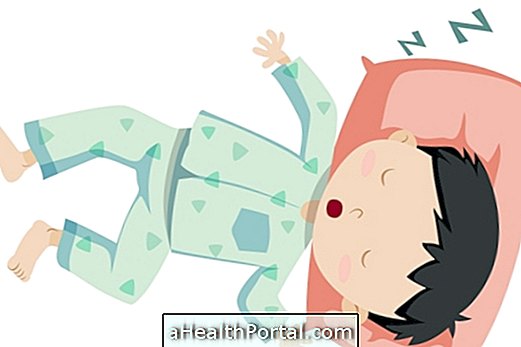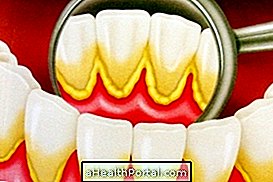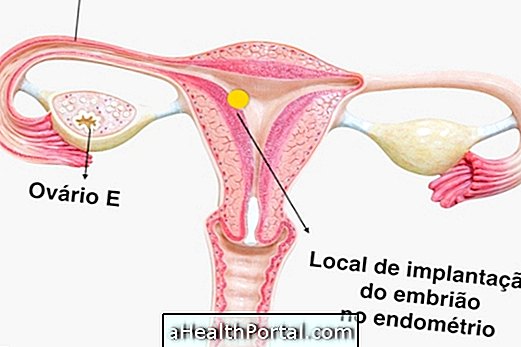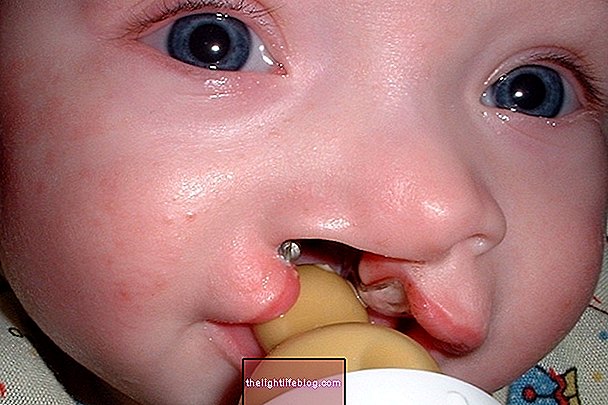The vegetative state happens when a person is awake, but is not conscious and also does not have any type of voluntary movement, not being able, therefore, to understand or to interact with what happens around him. Thus, although it is common for the person in the vegetative state to open their eyes, it is usually only an involuntary reaction of the body, not being controlled by their own will.
This condition usually arises when there is a marked decrease in brain function, which is only sufficient to maintain involuntary movements, such as breathing and heart rate. Thus, although external stimuli, such as sounds, continue to reach the brain, the person can not interpret them and therefore has no reaction at all.
The vegetative state is more common in people who have suffered extensive brain damage, as in more severe cases of head bumps, brain tumor or stroke, for example.

Main symptoms of vegetative state
In addition to the lack of awareness and inability to interact with what is around him, the person in a vegetative state may still present other signs such as:
- Opening and closing the eyes during the day;
- Slow movements of the eyes;
- Chew or swallow, other than during meal;
- Produce small sounds or moans;
- Contract your muscles when you hear a very loud sound or if it causes pain in the skin;
- Production of tears.
This type of movement happens due to primitive reactions of the human body, but are often confused by voluntary movements, especially by relatives of the affected person, which can lead one to believe that the person has become aware and is no longer in the vegetative state.
What's the difference of the coma?
The main difference between coma and the vegetative state is that in the coma the person does not appear to be awake and therefore there is no opening of the eyes or involuntary movements such as yawning, smiling or producing small sounds.
Understand more about coma and what happens to the person during that period.
Does the vegetative state have a cure?
In some cases the vegetative state has a cure, especially when it lasts less than a month and has a reversible cause, such as intoxication, for example. However, when the vegetative state is caused by brain damage or lack of oxygen, healing can be more difficult and often impossible.
Doctors usually consider healing as possible when the vegetative state lasts less than 1 month, if there has been no trauma to the head or lasts for less than 12 months when a blow has occurred.
If the vegetative state continues for more than 6 months, it is usually considered a persistent or permanent vegetative state, and the longer it passes, the less chance of cure. Also, after 6 months, even if the person recovers, it is very likely to have severe sequelae, such as difficulty speaking, walking or understanding.
Main causes of vegetative state
The causes of vegetative state are usually related to injuries or alterations of the functioning of the brain, so may include:
- Strong blows to the head;
- Accidents or severe falls;
- Cerebral hemorrhage;
- Aneurysm or stroke;
- Brain tumour.
In addition, neurodegenerative diseases, such as Alzheimer's, also alter the correct functioning of the brain and therefore, although it is rarer, may also be at the base of the vegetative state.
How is the treatment done?
There is no specific treatment for the vegetative state and, therefore, the treatment must always be adapted to the type of symptoms that each person presents, as well as to the causes that were the origin of the vegetative state. Thus, if there are cerebral haemorrhages, it is necessary to stop them, if there is intoxication, it is necessary to fight it, for example.
In addition, it is necessary to replace the person in the vital tasks that he can not do, such as eating, moisturizing and bathing, for example. Thus, almost all patients in the vegetative state should be admitted to the hospital to be fed directly into the vein and have their daily hygiene.
In some cases, especially when there is a high likelihood of recovery, the physician may also advise on passive physiotherapy in which a physiotherapist regularly moves the patient's arms and legs to prevent the muscles from degrading and to maintain the functional joints.


























